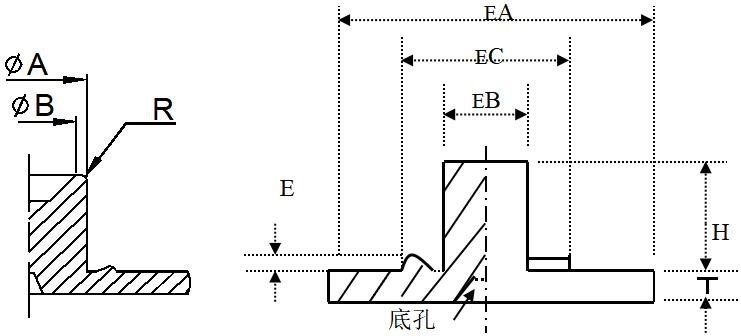We must have seen nails in our life. The wood and iron pieces can be assembled to stabilize objects. If you turn the nail upside down, it will look like a letter T, there also a part inside our speakers that act like a nail, which is the base of our speaker – the T yoke.
The T yoke is also called the iron core, which can play the role of magnetic permeability in the magnetic circuit. According to its shape, it can be divided into U-shaped yoke and T-shaped. From the figure, we can understand the role of the yoke in the magnetic circuit (the part with the slash is a magnet).

When we design and select T yoke, it will vary according to the use, power and performance requirements of the speaker. The diameter of the center of the T yoke is the inner edge of the gap of the magnetic circuit of the speaker, and the voice coil vibrates in the gap, so the diameter of the center of the T yoke is the inner edge of the gap of the magnetic circuit of the speaker.
Size matters. The height of the T yoke, the thickness of the iron sheet, and the winding width of the voice coil have an impact on whether the speaker with large amplitude produces bad sound. If the thickness of the magnet and the iron sheet is fixed, the speaker cannot withstand the proper power, it touches the bottom during vibration. Therefore, the T yoke in the form of gully or ditch must be used to compensate the thickness of the bottom plate in the form of the back convex of the bottom plate. However, the following three points must be paid attention to when designing the gully T yoke:
1.The ditch should not be too deep or too sharp. In the picture, A is a ditch, so the slope D should not be too steep, and the bottom C of the ditch should also maintain a certain width, otherwise the T yoke will not be able to withstand this stamping and burst.
2.Maintain the original thickness of the bottom plate, that is, the thickness of the slope B at the bottom of the groove after the ditch is at least the thickness of the bottom plate T, otherwise the magnetic conductivity will be affected. Certainly better than T thick. If C is very narrow and the thickness of the bottom is slightly different, the influence is not large and can be ignored.

3.The core column is also grooved, which has two advantages: one is to reduce the weight of the core and reduce the cost; The second is to make the gap magnetic field distribution in the magnetic circuit more uniform, which helps to reduce harmonic distortion. However, the column hole cannot be arbitrarily designed, and care must be taken not to affect its performance. If the thickness of the core of the SPK is t, then A – B ≥ 2t, but when there are multiple models using the core, the thickest t must be used as the benchmark. Otherwise it will affect the magnetic flux density (please see the above).

